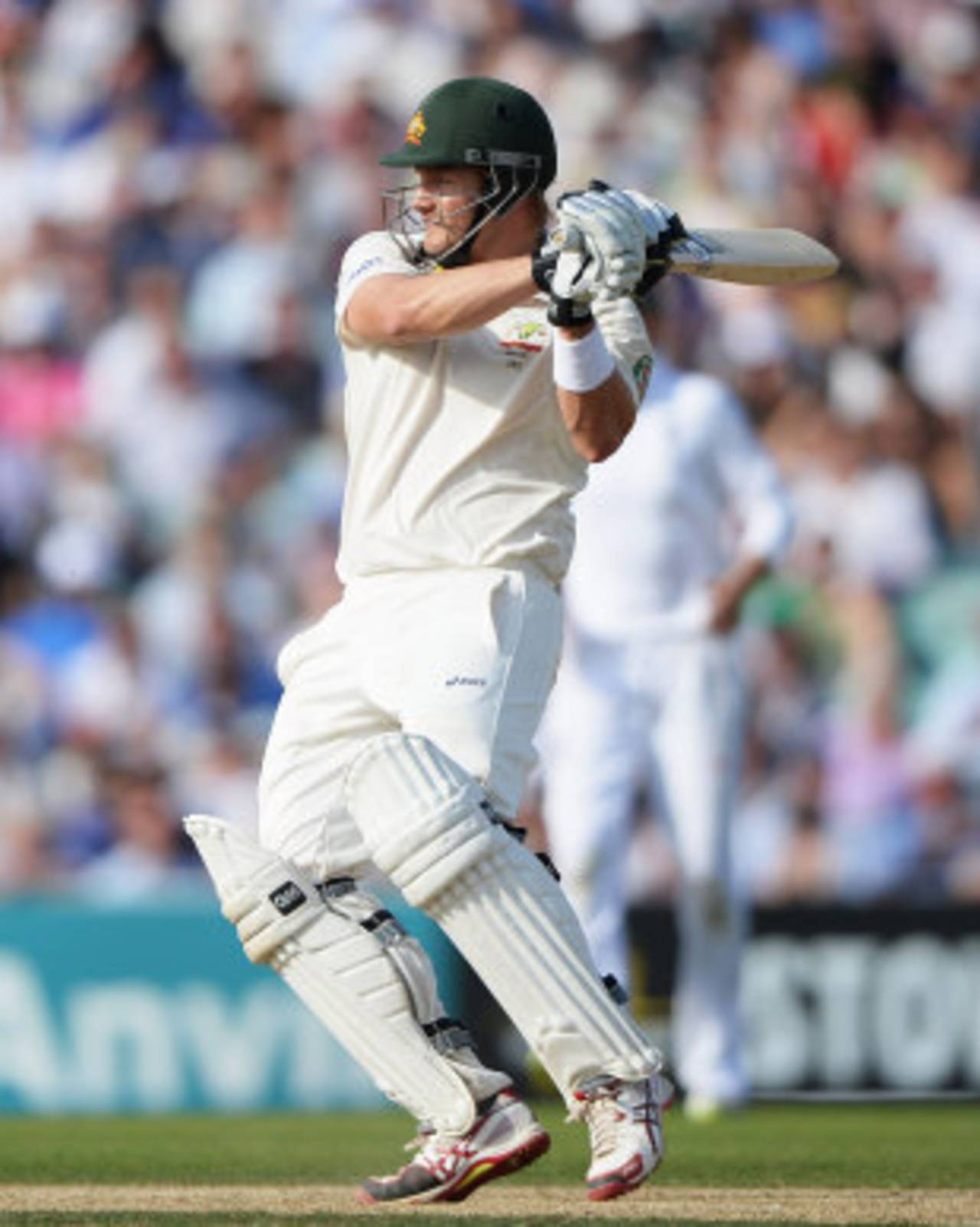Every good team has a strong No. 3 batsman and that has been evident in the most successful Test sides of recent times.
India had Rahul Dravid with his technical efficiency and are now blessed with Cheteshwar Pujara, whose taste for big scores would satisfy a master chef. South Africa have Hashim Amla, a run-making machine, and England's Jonathan Trott performed a similar role until recently. It's no surprise that Trott's slump has coincided with England putting up lower totals. Sri Lanka have the silky smooth Kumar Sangakkara and Australia had an ideal prototype in
Ricky Ponting.
However, since Ponting retired, the No. 3 position has been a black hole during a period of limited Australian success. That's why the importance of
Shane Watson's belligerent century at
The Oval can't be overstated.
Ponting was the latest in a long line of Australian No. 3s who excelled in successful teams, a list that includes illustrious counterattackers like Don Bradman, Neil Harvey, Clem Hill and Charlie Macartney.
To validate the credentials of the latter two: Hill was once widely regarded as the best left-hander in the game; and Macartney uttered the words, "Some cove's going to cop it today" before strapping on his pads to face Nottinghamshire
in 1921. He lived up to his boast by rattling 345 in 232 minutes, still the fastest first-class triple-century (in terms of balls faced).
After yet another shuffle of the Australian batting order Watson was at No. 3 for the first time in this series, and he proceeded to bat in a similarly ambitious mode. His defence was more solid than in the earlier Tests, he produced flowing drives to full deliveries and dispatched the shorter ones with authoritative pull shots.
However, it was his match-awareness that caught the eye. He took charge of the game with the advent of England's two debutant bowlers. Admittedly, Chris Woakes and Simon Kerrigan delivered some dross but the effect of that was heightened by Watson's eagerness to stamp his authority on the innings.
This is what a successful Test team needs from their No. 3: a player who can come in at the fall of an early wicket but not be frightened to launch a counterattack the moment he feels comfortable. It's a ploy that can unnerve an opposition expecting a more measured response. A successful No. 3 must also be a decent player of spin bowling because he is expected to regularly convert starts into big scores. For the first time in ages Watson achieved that goal, and for only the second time since Ponting's departure, an Australian No. 3 scored a Test century.
There is a lot of codswallop spoken and written about the No. 3 spot. For instance, some have said it's the most difficult batting position when it is, in fact, the best place in the order to bat. A good No. 3 has the opportunity to set the pattern of play rather than follow the established trend. It's far easier coming in at one for very few than three for not many; one wicket can be a fluke, whereas three down is a collapse.
Then there's the notion that the "poor old No. 3" might have to face the second ball of an innings. If you're not mentally ready to enter the fray at 0 for 1 then you're not in the right frame of mind to bat at first drop. A No. 3 doesn't yearn for an opener to be dismissed early, but it is better to bat when you're fresh rather than after you've been sitting around for a few hours.
Watson still has much to prove before he's an established top-class No. 3. However, he has a number of traits that are required, not the least of them being an ability to counterattack against the new ball.
Australia will not return to being a strong batting side until they at least find a capable No. 3. Watson still has to show he can handle that task against consistently good bowling on a regular basis. However, his credentials place him well ahead of the nearest challenger in the Australian side for this crucial batting position.
